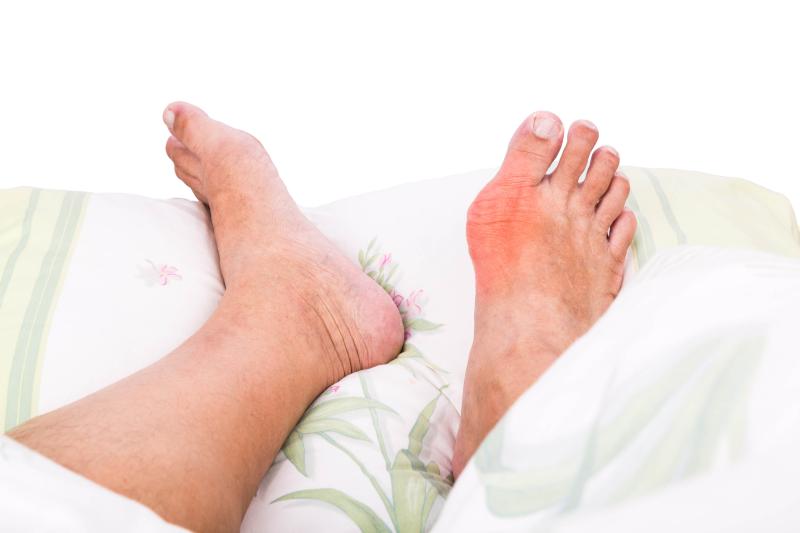
In the treatment of patients with gout, febuxostat plus a low-purine diet helps reduce inflammatory factors and pain, according to a study.
A total of 98 patients participated in the study. These patients were randomly assigned to receive either febuxostat or allopurinol (control) in combination with a low-purine diet for 6 months.
The effect of treatment was evaluated based on joint function and serum uric acid levels and was rated according to the following levels: markedly effective, effective, and ineffective. Inflammatory factors, including tumour necrosis factor-a (TNF-a), cytokine interleukin-1beta (IL-1β), and interleukin (IL)-18, were also assessed. The degree of gout pain was measured using the Numeric Rating Scale (NRS).
Baseline characteristics such as age and gender were similar between the treatment groups. After 6 months of treatment, the effective rate was significantly higher in the febuxostat group than in the control group (97.96 percent vs 85.71 percent; p=0.027).
Likewise, patients in the febuxostat group had significantly lower levels of serum uric acid (162.39 vs 198.32 μmol/L; p<0.001), creatinine (87.39 vs 92.18 mmol/L; p=0.014), total cholesterol (3.65 vs 4.76 mmol/L; p<0.001), and triglycerides (1.76 vs 2.28 mmol/L; p<0.001) compared with those in the control group.
Finally, febuxostat plus low-purine diet led to substantial reductions in the levels of inflammatory factors and degree of pain compared with the control (p<0.05).
In terms of safety, adverse reactions occurred less frequently with febuxostat than with the control (4.08 percent vs 18.37 percent; p=0.025).